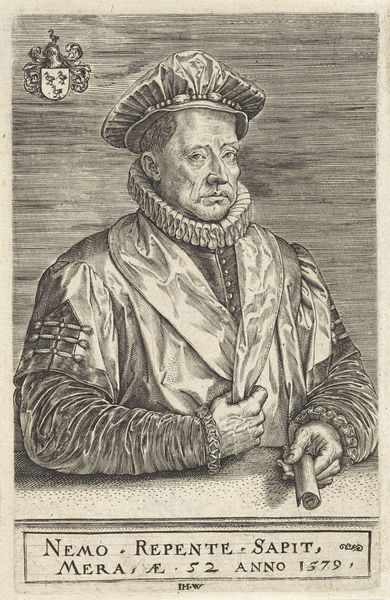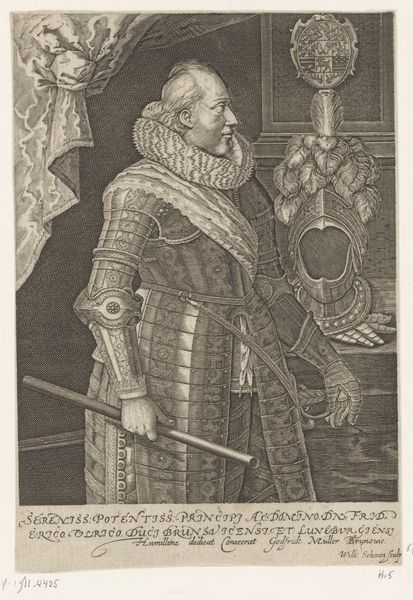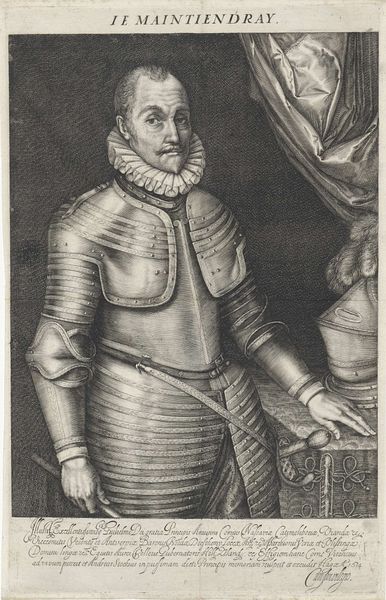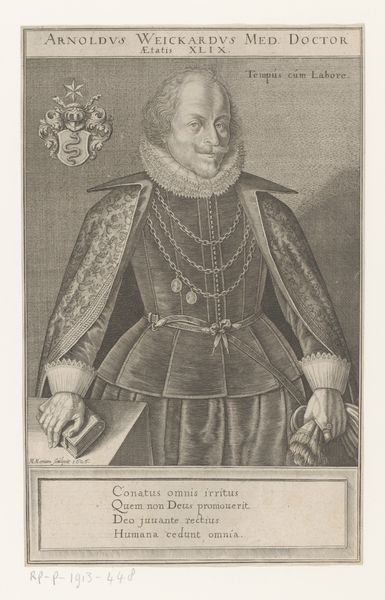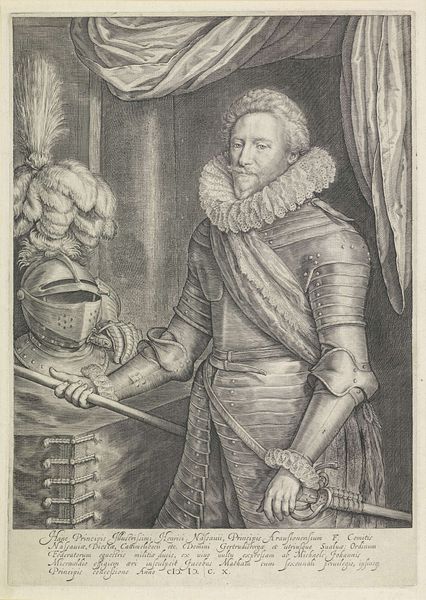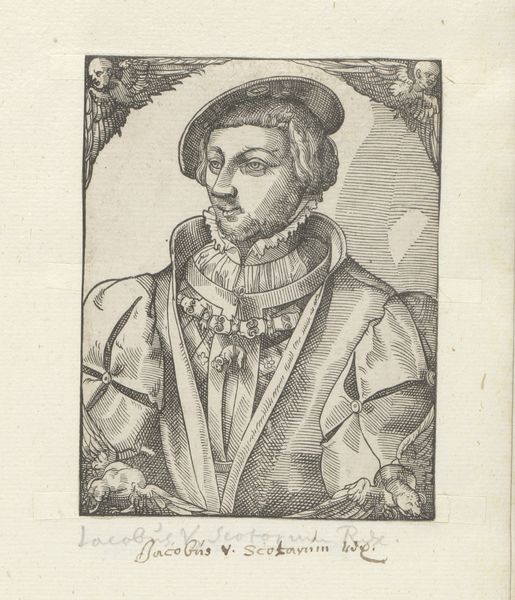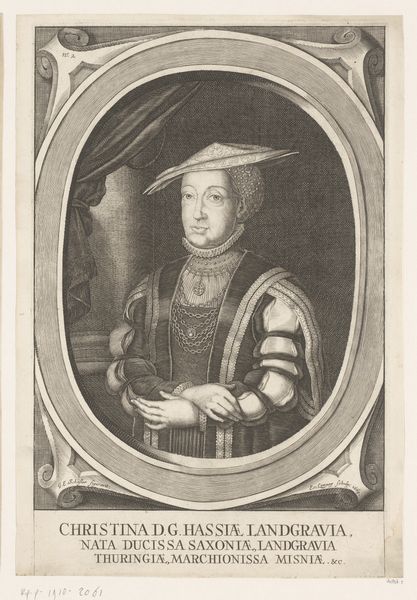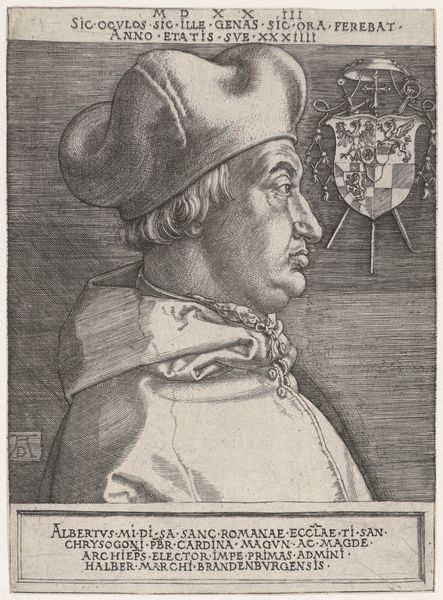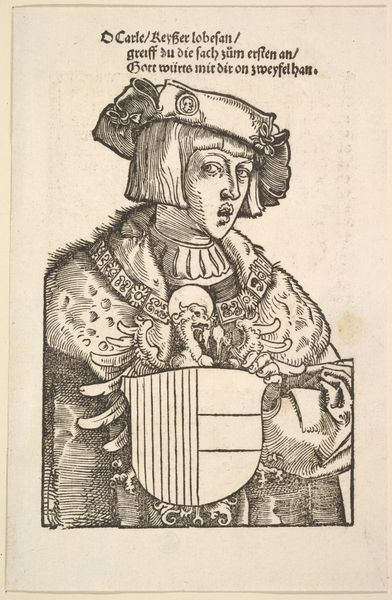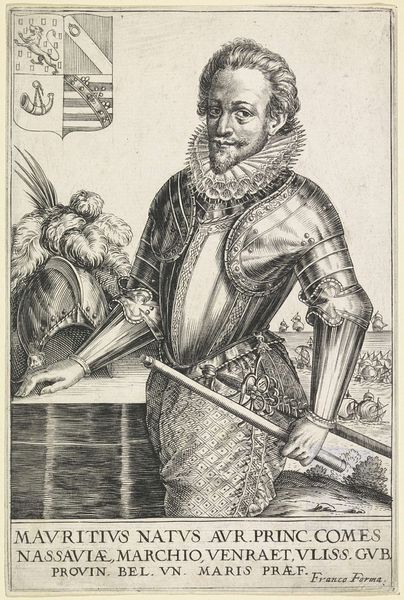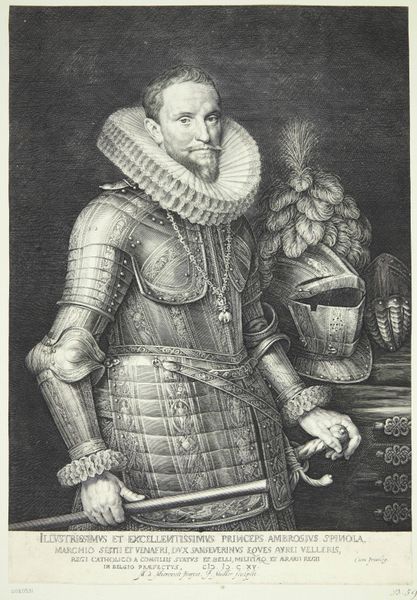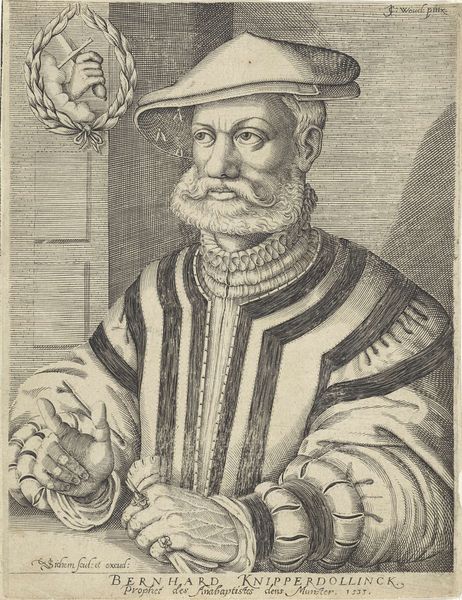
print, engraving
#
portrait
# print
#
figuration
#
portrait drawing
#
northern-renaissance
#
engraving
Copyright: National Gallery of Art: CC0 1.0
Editor: Here we have "Lady von Eckh (born Piencsenau)," an engraving from 1553 by Hanns Lautensack. The detail is incredible for a print. She looks rather somber and composed, yet self-assured, for a woman of only 23, if I'm reading the inscription correctly. What stands out to you in this piece? Curator: What strikes me is the carefully constructed image of status and virtue. Consider the date: 1553. This is a period of religious and social upheaval. Portraits like this, particularly of women, served as powerful tools of self-presentation. Notice the heavy chain. Is that merely adornment, or could it also symbolize the ties and obligations of marriage and family in maintaining social order? Editor: That's fascinating, I hadn’t thought of it that way! The chain definitely appears significant, almost like a visual anchor. And the architectural elements surrounding her, do they serve a purpose beyond just setting? Curator: Absolutely. The column, the drapery, even the landscape glimpsed in the background, all contribute to a sense of established order and control. Look closely at the coat-of-arms-like design. Family lineage and societal position were paramount. This portrait is less about individual personality and more about reinforcing a particular social standing in a world undergoing considerable change. Do you think this portrait could tell us anything about women's limited role in arts as patronage at this time? Editor: That’s insightful. It gives the piece so much more depth knowing how images worked back then. I learned a lot about this engraving's place in history and Lady von Eckh's possible intent when commissioning it! Curator: Exactly! Recognizing those power dynamics is essential to fully appreciate early modern art.
Comments
No comments
Be the first to comment and join the conversation on the ultimate creative platform.
